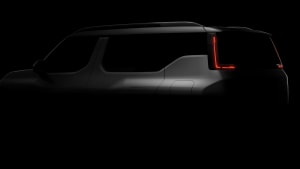2024 Kia Sonet review, first drive - how is it better than before?
The Kia Sonet has been around for about four years now, although no one would accuse this compact SUV of feeling a bit long in the tooth. Nevertheless, we now have a fairly significant mid-life update. This only goes to show that cut-throat competition means that no carmaker can rest easy in this segment. For you, as a buyer, there's now more to wring out for your buck than ever before.
2024 Kia Sonet styling
The most distinct changes to this facelifted Kia Sonet are to its look. The face is now notably different. The wider grille with the more intricate notched detailing is one aspect but the new lighting with the large L-shaped signatures also does its bit to give the Sonet a wider, squatter stance. Quite a change from the more rounded look of earlier.
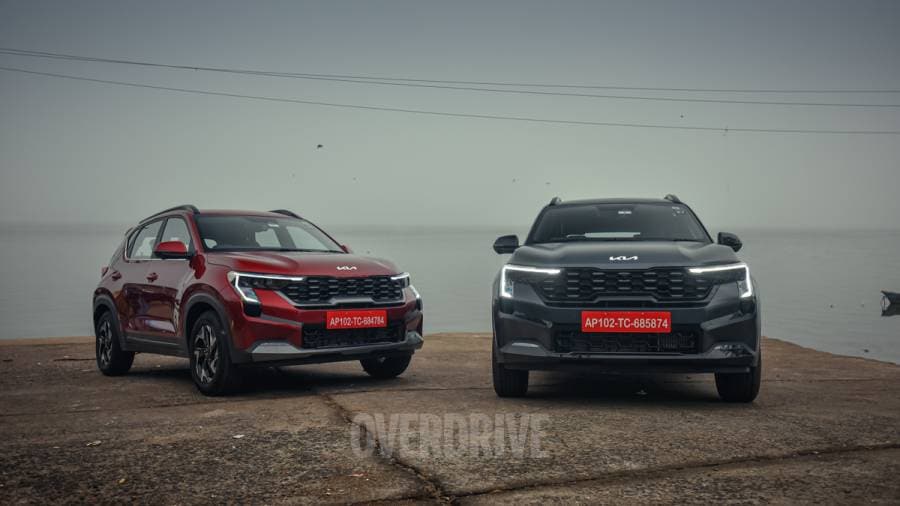
Aside from the Tech Line and GT Line styling packages, the Sonet also debuts the X-Line dark-themed trim here. As with the Seltos, these make for quite a distinction between varying versions of the Sonet. Kia has put some effort into this. You get an entirely different, more sculpted bumper with the GT-Line and X-Line versions, complete with different cutouts for the foglamps and airdams.

There haven't been a lot of sheet metal changes though, so in profile, there's not a lot that's different from earlier aside from a sharper set of dual-tone alloy designs. You get some smart paint choices and trim materials, especially the gloss black and matte paints in the X-Line versions. But these will probably need a good amount of care to keep looking as neat as they do here.
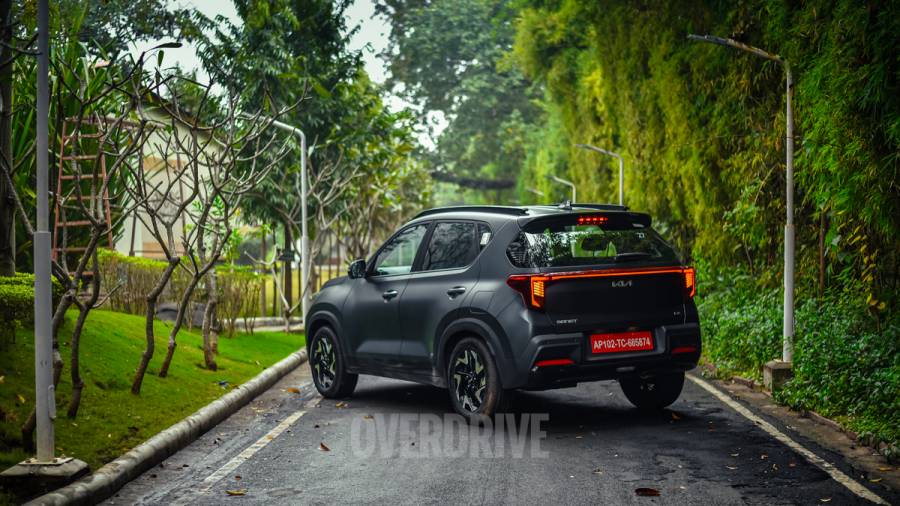
The rear is now dominated by a sleek full-width light design. These are no longer just ornamental and the vertical theme now seems to enlarge this relatively small SUV's presence. The detailing is especially intricate which again adds to the quite sophisticated look of the Sonet. In our eyes, it's tempered enough to not seem overdone.
2024 Kia Sonet interiors, space, practicality
The basic theme of the Kia Sonet's cabin remains unchanged. So you still have the cascading dash with the large floating instrument console and those distinct vertical air vents. As before, this space feels rich with the tactile functioning of the switchgear and general fit and finish.
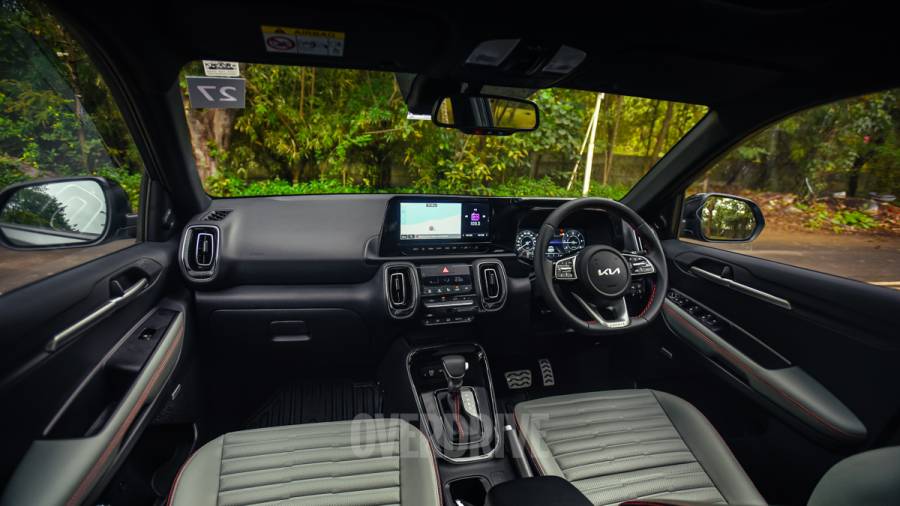
Like with the Seltos, you now have differentiated cabin appointments depending on the version you choose. The X-Line seen here goes heavy with the dark themes, contrasted by the lighter seats and red stitching. The GT Line follows a similarly sporty theme in the beige-black colour palette.
New with this update is the tan upholstery you get in the Tech Line, which convincingly adds a good dose of richness to the cabin. The front seats aren't the most comfortable ones with their limited thigh and lower back support, but surprisingly, we found the flatter Tech Line chairs to be a better bet over the ridged ones in the GT and X Lines. Although the new powered adjustment adds some convenience in the sportier trims.
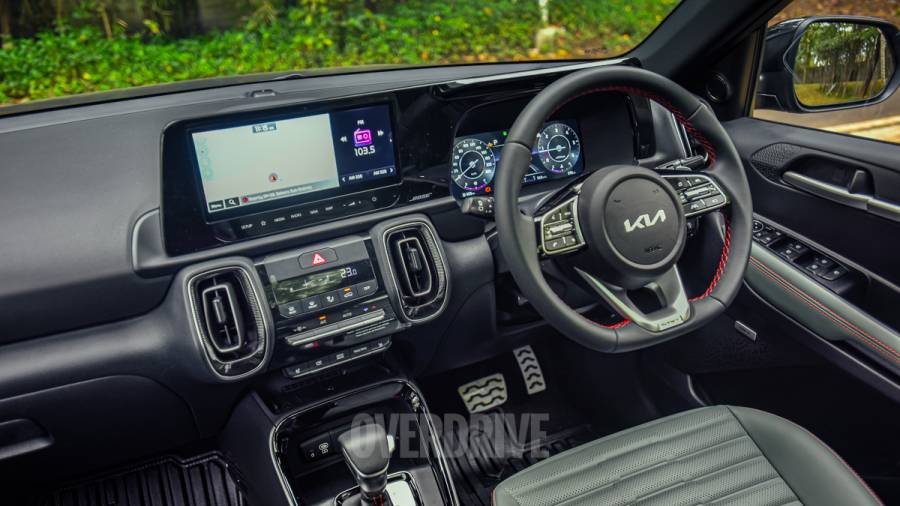
Some other useful additions on the inside are the new climate control switches. They have a more tactile function now with their toggle-type layout while also going better with the cabin's ambience. Another such addition is that of the new 10.25-inch digital instruments cluster. It's easily readable and has hi-res graphics that make you feel like you're driving something far more expensive.
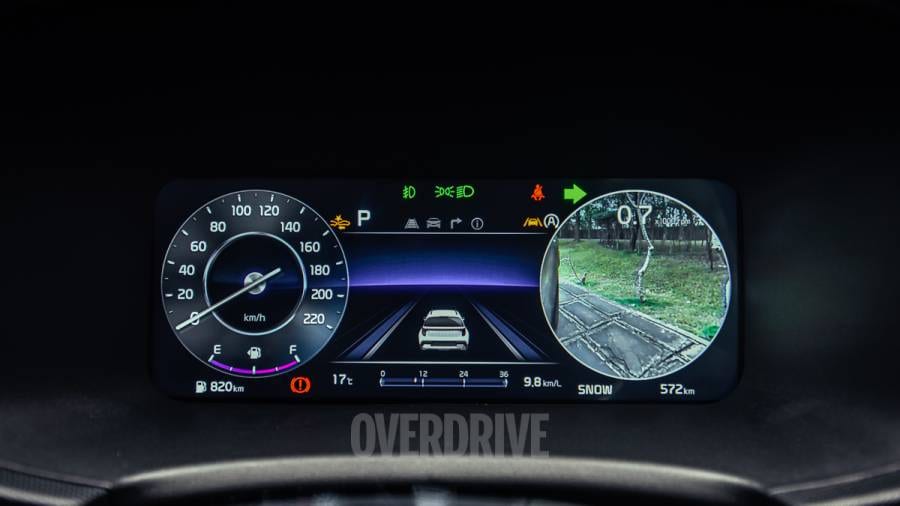
Also, the thoughtful blind-view camera functions are genuinely useful in traffic. The 10.25-inch central touchscreen has also been updated to the latest Kia unit with added functions like the Valet mode, although wireless Android Auto/Apple carplay is still missing.
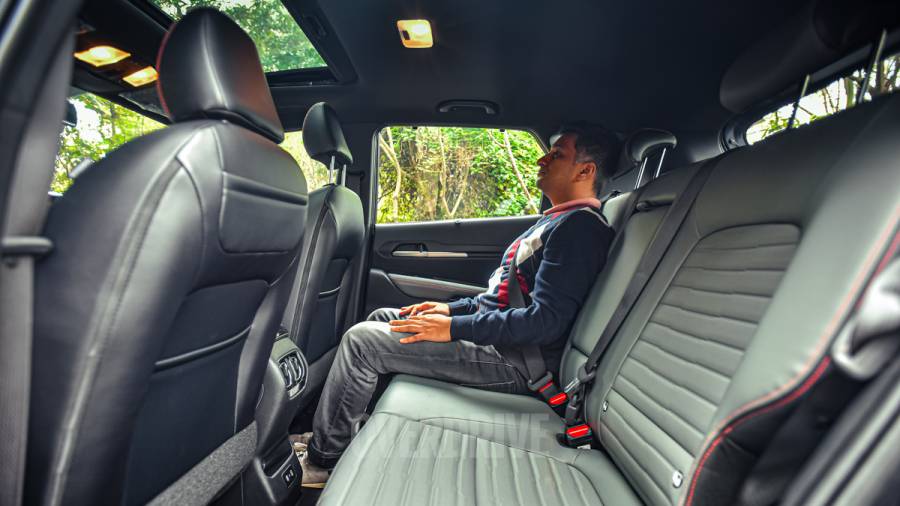
The Sonet isn't the widest car in its segment, a fact you notice the most in its rear seat. So this Kia is best suited for four adults, the fifth being a tight fit. Some of this has been addressed with the front seatbacks being now scooped out and with the slightly recontoured rear benches adding a touch more thigh support. So now, legroom and knee room are adequate for this segment, although again the seats could do better with their cushioning and back support. While there's no third headrest, you do have a three-point middle seatbelt now.
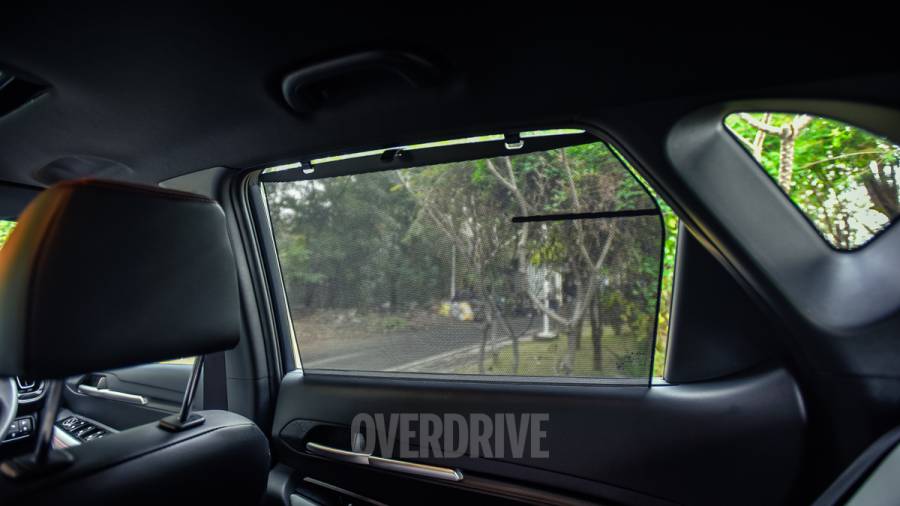
But the generous feeling that you get with the long equipment list continues here. You get a one-touch function for all the windows, as well as sunshades. There's also access to the air purifier from here. Practicality is well taken care of, you get two Type-C ports to complement the Type-A and C ports as well as a 12V outlet in the front, aside from the neatly arranged wireless charging pad.
2024 Kia Sonet features, safety
Notable features include full LED lighting, auto headlamps, ventilated seats, sunroof, 7-speaker Bose audio, paddle shifters, drive and traction modes, tilt steering adjustment, cruise control and leatherette seats. The connected features now also include a live vehicle tracking function.
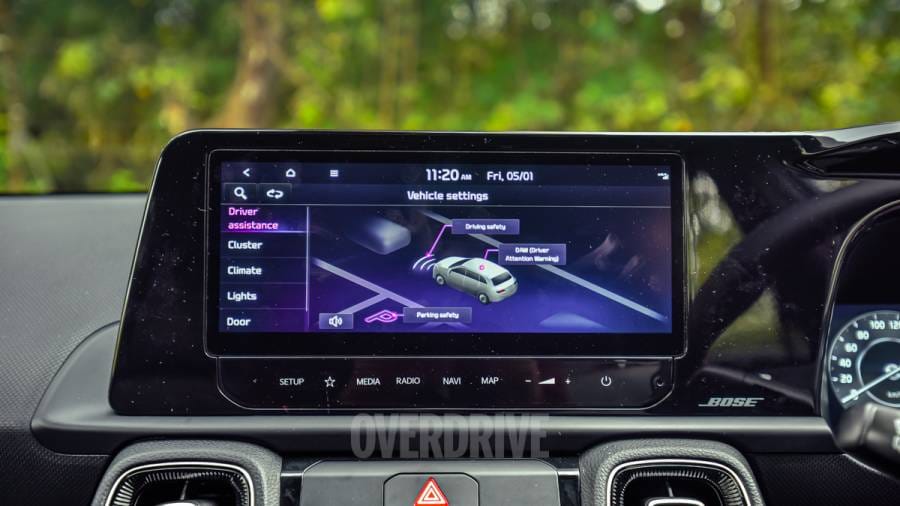
The new Sonet hasn't been crash-tested yet but you now get six airbags as standard. There are also 360-degree cameras, TPMS, hill-hold and the newly added suite of level 1 ADAS functions. We did try this out briefly and given that it is a camera-based system, we think it can be a good aid to have just to keep you alert. It's not the most accurate of these systems, especially in more complex road situations so it's best seen as a pre-emptive measure.
2024 Kia Sonet driving impressions, specifications
The Kia Sonet continues to be available with the same engine and gearbox combinations, although a notable development is that the diesel-automatic variant has now been reintroduced. The 1.5-litre turbo-diesel continues to make 115PS and 250 Nm, paired with a six-speed torque converter.

This powertrain makes for a driving experience that's well-remembered by most, but increasingly under threat at this price point. Yes, it doesn't have that big slug of mid-range diesel torque from pre-BS6 cars, but you still have that sense of low-effort performance that makes diesel cars likeable. There is a touch of hesitance below 2,000 rpm but it's not enough to be a bother in moving traffic.

But highway cruising is where this Sonet shines, where holding speeds and overtakes take little effort. The torque converter isn't the most alert one around, but the easily accessed torque manages to cover for this in all but the most enthusiastic driving. Either way, using the paddles does seem to tend to this to an extent. An added bonus is that noise levels, especially at lower rpms are reasonably well controlled.
The other engine option that remains unchanged is the 1.0-litre turbo-petrol that makes 120PS and 172 Nm, pairing with a six-speed iMT or a 7-speed DCT. This motor continues with its straightforward, inoffensive nature. It's again got some linear mid-range punch, not as much as the diesel but with more revs to play with it does make for a tractable experience in traffic.

That said, in stop-go traffic, the iMT can be a touch lethargic before the boost comes on. Despite this, we did notice that this clutchless manual is more natural to use than in the Seltos. It's a bit quicker to match revs on downshifts which brings the experience closer to a regular manual.
But our pick would still be the dual-clutch. Like with this Hyundai-Kia unit, it's not too keen on hard shifts but the added ratio does well to hide the engine's lag. It also makes the Sonet hassle-free in the city and on the highway with its well-timed shifts as long as you keep things steady. This is also true for the diesel, but the drive modes also alter the gearbox's responses aside from steering and throttle feel which brings a mild but noticeably more energetic driving experience to both versions.
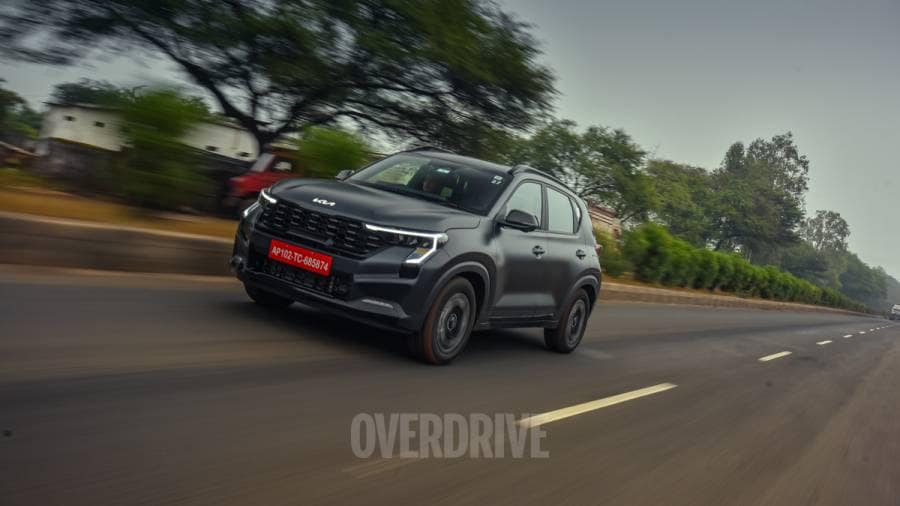
Kia says there has been a minor retuning of the Sonet's rear suspension, but in our experience, the compact SUV continues to ride and handle very similarly to earlier. So smaller imperfections are handled reasonably, but with that slightly firm edge that you find in many other Kia offerings. This also means that larger potholes or broken surfaces are noticeable. It improves a bit at higher speeds. Here, the Sonet feels stable, although not as much as some others in this segment. The diesel with its heavier front-end does better here than the petrol version.

The steering weighs up naturally as you would expect at these speeds, although here we would have like a bit more directness as you turn into bends. But the trade-off is that in city conditions, it's got a nice smooth and low-effort feel to it. Again, with the petrol's lighter nose, it's a bit more agile around bends than the diesel but the Sonet is among the better controlled in this segment. The former set-up controls roll well which helps with a more controlled feeling.
2024 Kia Sonet price, verdict
With this update, the Kia Sonet reinforces itself against the many rivals it competes with. It's no longer the only premium choice in the compact SUV segment but with its facelift, it continues to come across as the most convincing one. The smarter looks help, as does the longer list of features. The generally good driving experience and the many trim and powertrain choices continue to be other positives too.
Also read,
Spec comparison: Kia Sonet facelift diesel vs Hyundai Venue diesel vs Tata Nexon facelift diesel
In pictures: 2024 Kia Sonet facelift accessories
Kia Sonet X-Line vs GT-Line: What's different?
Starts Rs 6.71 Lakhs
1493cc
Automatic
83
250
-NA-
Starts Rs 7.53 Lakhs
1493cc
Manual
83
240
-NA-
Starts Rs 9.95 Lakhs
1497cc
Automatic
115
250
20.8 Kmpl
Starts Rs 6.95 Lakhs
1497cc
Automatic
110
260
21.5 Kmpl


